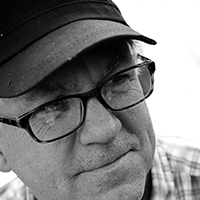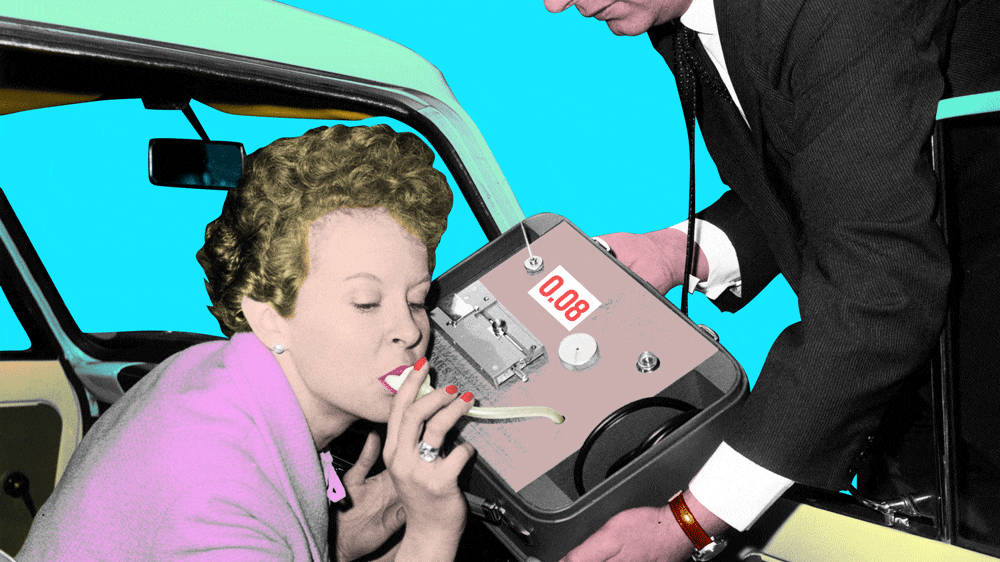Eighty years ago, science slipped into the backseat of your car, rolled down the windows, and made itself at home. It has remained there ever since.
In 1937, the first drivers were fined for drinking and driving based on evidence from a newfangled device called the “drunkometer.” It could figure out how much you’d been drinking based on what you exhaled, and it fundamentally reshaped our relationship with liquor, not to mention the relationship between lawmakers and local police.
Technology often arises to solve a problem, and this was no exception. Drunk driving had long been a problem. Before Henry Ford was born, drunk drivers got behind the reins, causing mayhem and destruction with horse and buggy.
As late as 1915, when Ford’s Model T’s were already tootling about, a Georgia man named Vince Sullivan tore down the road at a high rate of speed in his horse-drawn carriage. He swore loudly as he passed a church then swerved into a yard and tore up a garden fence. He was arrested for drunk driving (also referred to at the time as “drunk and driving” or “driving while drunk,” but never “drink driving,” as the British have awkwardly phrased it).
A report in the Macon Telegraph suggested the circular vagaries behind Sullivan’s offense: “The court holds that a drunk is a man who races a horse along a public highway, uses bad language and is so under the influence that that he can’t keep in the highway but tears down fences along the side of the road or street.”
But this definition gets at a central point: For years, behavior defined inebriety, not consumption. If you acted like a drunk and damaged property or person like a drunk, you were drunk and unfit for the road and subsequently could be jailed or fined.
For obvious reasons, this became more of an issue with the rise of the internal combustion engine. As horsepower increased and speed limits rose, the consequences of piloting a couple of tons of hurtling steel with impaired reflexes—and without a sober horse as co-pilot—grew more dire. The first recorded arrest for drunk driving in an automobile took place in London in 1897, when a sodden 25-year-old taxi driver plowed into a grocery wagon.
The first American laws against driving a motor vehicle while impaired were passed in New York in 1910, at which time the United State was home to nearly a half-million automobiles. And the goal of the constabulary soon shifted more to detecting drunk drivers before they caused damage or death.
At the outset, drunkenness was determined by observation. If a car was moving erratically, the police were empowered to pull it over and administer a field test. The officer would sniff the driver’s breath, and then would ask the suspect to follow the tip of a pencil with their eyes, stand on one foot, or walk a line the officer had drawn on the pavement in chalk. Another test was to ask someone to say “Methodist Episcopal” three times in a row.
Such tests were of course subject to grading on a curve. A well-known local doctor might be deemed sober enough to continue home, but a similarly soused warehouseman might be frogmarched off to the hoosegow to sleep it off and be levied a fine. Also, these tests lacked a certain scientific rigor.
So scientists showed up, clipboards in hand. In the 1920s, a Swedish toxicologist named Erik Widmark, a giant in forensic pharmacology, developed protocols for analyzing blood to determine how much alcohol a person had tippled. The early approach was intrusive—five small tubes of blood would be collected from your earlobe, and then a carefully measured portion placed in a small cup over a solution, which changed composition and color as the ethanol in the blood evaporated. (Five samples were needed for multiple tests to ensure reliability.) While Widmark’s blood tests were widely employed in Europe (Nazi Germany embraced them in 1938; Sweden established a limit of 0.08-percent blood alcohol in 1941), the blood test was largely resisted in the United States as being overly invasive.
Addressing the problem, several devices appeared soon after that could estimate how much alcohol was in your system by testing your breath, which science had calibrated to match the alcohol in your blood. Dr. Emil Bogen of California used chemicals held in a football bladder for his device; an inventor in Chicago named W.D. McNally developed a similar instrument that got wide play in the popular science press, although it never caught on.
In 1931, Dr. Rolla N. Harger of Indiana University developed and named a breath-based testing unit he called “the drunkometer” as a joke, but the name stuck. The suspect would be asked to inflate a balloon, the contents of which would then be passed through a purple mixture of potassium permanganate, sulfuric acid, and water. Trace amounts of alcohol would alter the purple color of the solution. This would be compared with the color of test tubes prepared from samples of people whose alcohol blood content levels were known.
By 1937 the results were accepted by state courts in Indiana; two drivers that year were fined $5 each for drunk driving. In 1939 Indiana passed the first state laws linking degrees of intoxication with alcohol blood levels, defining drunkenness as having a blood alcohol content of 0.15-percent—nearly double the common threshold of 0.08-percent today. “Science is replacing guesswork in obtaining evidence in drunken-driving cases,” The New York Times reported.
Still, the drunkometer was cumbersome. So in 1954 a more refined version—called the Breathalyzer—was rolled out at the National Safety Congress, followed by tests in six communities in the U.S. and Canada. This device was developed by Lt. Robert Borkenstein, supervisor of the Indiana State Police Laboratory, who had help from Indiana State University. (Note to self: Do not mess with Indiana when it comes to drunk driving.)
The early version wasn’t exactly pocket-sized. It weighed 14 pounds and had a tube into which the suspect blew. The breath sample then bubbled up through a liquid, which would change color from yellow to blue—the bluer it became, the drunker you were. This was analyzed by photoelectric cells, which it then translated to a meter and showed how much a person had drunk. (It wasn’t foolproof; some found they could clog the machine by spitting into it. Strainers were installed.)
Technology is adept at shrinking things down if nothing else. Today’s breathalyzers are smaller and far more complicated internally—most employ a fuel cell with two electrodes bridged by electrolytes. The ethanol in the breath is broken down by one electrode into acetic acid, while the other extracts oxygen, creating a mild electric current between them. A microprocessor analyzes the current, and calculates how much alcohol is present, which is converted to a blood alcohol content percentage.
For about $25, you can now buy a BACtrack analyzer that fits on a keychain, and instantly gives you your blood alcohol level in cheerful red numbers with reasonable accuracy and reliability.
As the technology has gotten smaller and easier to use, it has enabled social control to be more easily corralled by centralized authority. In the past century, drunk driving has gone from being a matter of local discretion to something now tightly regulated from above. Thanks to science, states first took the power to determine who was drunk away from local police by establishing blood alcohol levels. Later the federal government took that control from the states by making the 0.08-percent blood alcohol level a virtual national mandate by controlling grants for highway construction and the like, most notably with 1998 legislation signed by President Bill Clinton.
As we mark eight decades of laws based on what was once called the “chemical breath smeller,” we thus mark the rise of science and federal oversight, with the incontrovertible result that society has become safer as a result.
At a time when science seems widely mistrusted and the federal government widely loathed, it also may mark the last time that a dramatic, national policy backed by facts and overseen by legislators in Washington has gone unresisted, virtually unremarked, and hailed for its impressive track record of success.






